With alpine adventures under way and expedition season fast approaching, this months Coaching Dispatches looks at big waves.
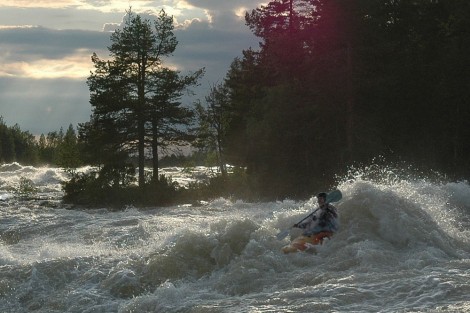
Photo: Tim Burne | Location: Sweden
Posture is the key to everything, without it we would capsize. When dealing with big waves upper and lower body separation becomes even more important. As the boat rides up and over the wave we must be ready to let the boat pitch upwards and keep our centre of gravity over the front of the boat.
When riding through a long wave train, our vision might be limited, we might only be able to see on top of the peaks. If we then want to change the way we are facing to change river position, we must think tactically about when this can effectively be done. In tight smaller wave trains, we might not be able to turn effectively in the trough of the waves because of the resistant from the peaks around us. We can’t push the boat through a wall of water. On big tall waves we might not want to travel up the wave facing sideways, in order to maintain posture and boat speed for anything unexpected behind the wave.
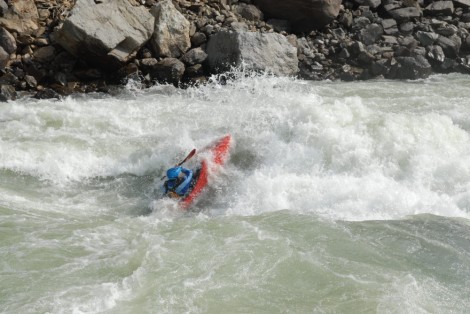
Posture is Key. Photo: Adam D | Paddler: Matt Tidy | Location: Nepal
As we see a big wave approaching, the obvious reaction is to hit the power and charge. We get that shot of adrenaline, tense up (effecting posture) and stop thinking about our strokes. As you get more used to this environment you’ll find you generally need less speed than you think and you’ll then find you have more control.
Remember you can’t take a big stroke off the top of a wave because there isn’t much water about. Two common mistakes I see regularly, is to take a stroke at the peak and the last half of the stroke just fires through the air or reaching behind a wave. In both cases we are not anticipating the change in water level through the waves. Slow, even powered strokes. This is a great time to play with changing blade pressure.
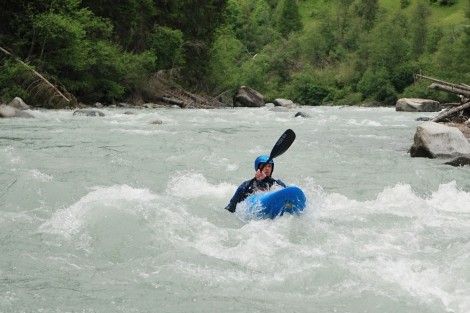
Nick applies even blade pressure as he rides over a wave in Switzerland.
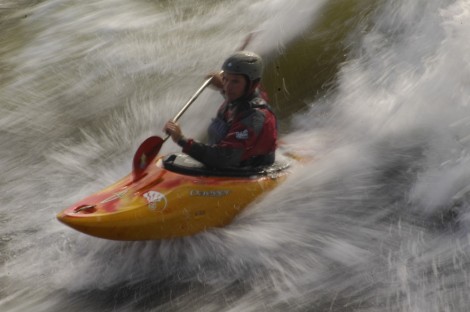
Don't forget to turn around and play on those waves! Photo: Tim Burne
Chris Eastabrook Coaching offers bespoke personal coaching covering a range of skills and mental preparation designed around your white water kayaking goals.
Last week I was running a FlowFree Playboating Development Week in Lyon. We had lots of fun and managed to catch Hawaii-sur-Rhone in good conditions as well as a couple of local slalom courses. Here’s a couple of pics from the week:


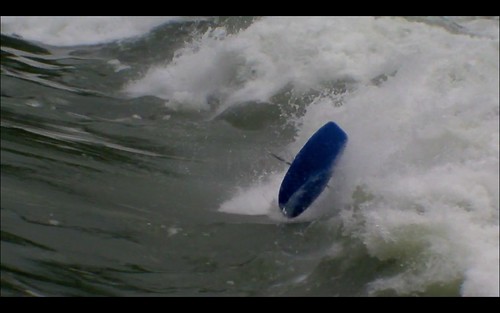

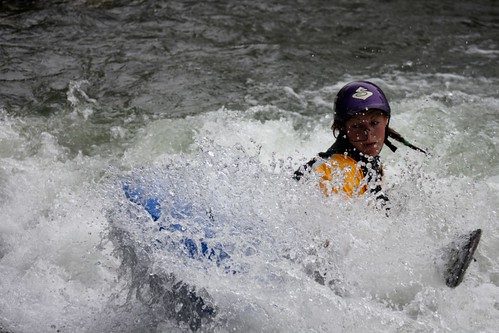
One of the students on the course has written up a report of his experiences, which we’ve put on our blog: http://www.flowfree.co.uk/2012/06/trip-report-lyon-playboating-development-week/
For a full album of photos, check out our Flickr page.
I’m now out in the French Alps running more coaching & guiding trips with some awesome levels. Next, I’ll be heading up to Norway for Voss Festival before flying out to Uganda for month of both guiding and play time! Hopefully see you on the water somewhere.
Lowri
Next weekend is the Val Selesia festival and along with fellow Palm paddler Dave Carrol, I will be running the Palm Throwbag Olympics (Thursday and Friday evenings) so I figured it would be good time to share some of the top tips I regularly teach on white water safety and rescue courses ready for the competition.
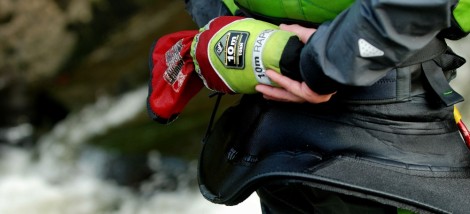
1. Plan. Using a throwbag is usually proactive, as in you have time to plan where and how you’ll be using it rather than reactive (jumping out your boat as someone swims passed?). Use this time to think about where a paddler is likely to swim, and whether there is an eddy to swing them into.
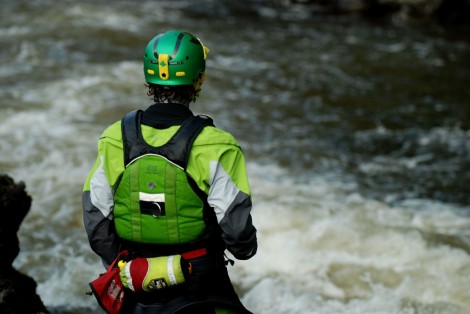
2. Throw. Too much emphasis is put on the throw itself, as long as it reaches the swimmer, no problem! Roughly I use underarm when I want accuracy, an overarm when I’m throwing down from a cliff or I want the swimmer to feel the rope hit them and a wide bowling action for distance, like putting a rope across a river.

3. Belay. Key for me is managing the forces just as the rope goes tight. The load is same for you on the bank as it is for the person in the water. It doesn’t matter how strong you are, your grip on the rope or the ground if the person in the water is tired, they won’t be able to hold on. You, as the rescuer, must anticipate the force and brake appropriately. The easiest way of doing this to move downriver and away from the river, space you planned for in step 1. It is possible to let rope out or use a body belay but again doesn’t matter how you brake someone in the water as long as you do, allowing you to rescue any sized person. The bigger they are, the stronger the water, the more braking distance need.

Next Month’s Dispatch will look at tactics for bigger water paddling as many of us head away to France and Austria for some summer sun.
Chris Eastabrook offers year round safety and rescue courses and has Palm PFDs, throwbags and other goodies available to try out on the standard and advanced courses. Click here for www.chriseastabrookcoaching.com.
The photos for this blog came from David Fairweather, check out www.davidfairweather.net for more photos and stories. Thanks Dave, Thave.
As the WCA’s Freestyle Development Officer I am putting on a series of development weekends across Wales with demo freestyle boats, free coaching and a fun competition. If you or someone you know in Wales is wanting to get into freestyle, then there’s never been a better time to try it. We’re also looking for budding rodeo stars to make up a squad which will compete at freestyle events nationwide. Check out the flyer below:

If you need any more info, just drop me an email.
See you on the water… oh and spread the word!
Lowri






















